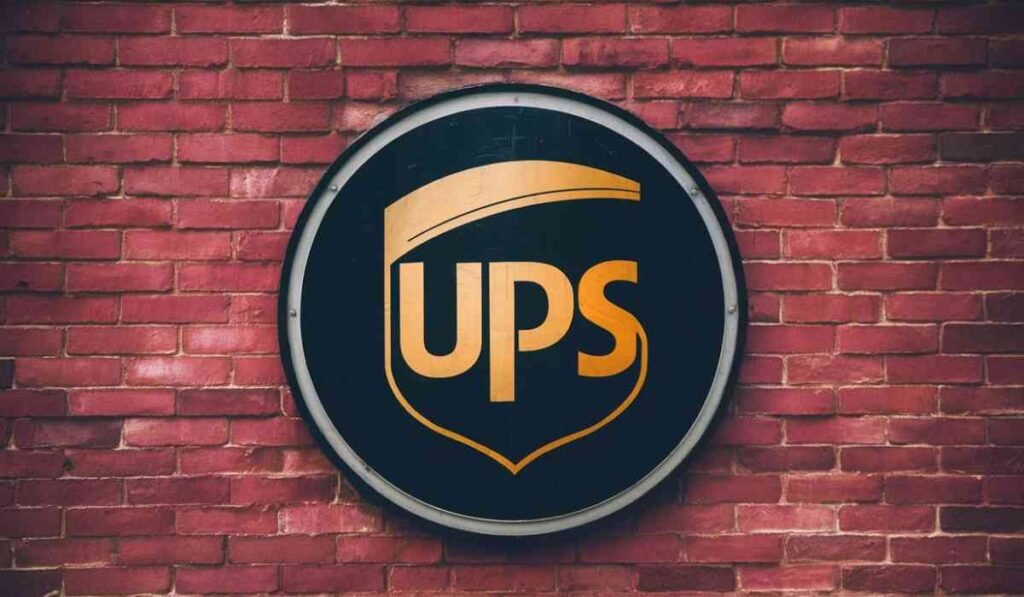In an era when online shopping has become the norm, delivery scams have proliferated, preying on unsuspecting consumers.
Among these scams, the MyUPS missed package scam stands out due to its cunning nature.
This article aims to arm you with the knowledge to recognize, avoid, and respond to this scam, ensuring your personal and financial information remains safe.
Overview Of The MyUPS Missed Package Scam
The MyUPS missed package scam is a phishing scam that exploits people’s trust in UPS. Scammers send fake notifications about missed deliveries,
Leading victims to a fraudulent website designed to steal personal and payment information.
With the rise in online shopping, such scams have become more sophisticated and prevalent, making it crucial to stay informed.
Understanding the basic premise of this scam is the first step in protecting yourself.
How The MyUPS Missed Package Scam Works
Understanding the mechanics of the MyUPS missed package scam can help you avoid falling victim to it. The scam typically begins with an unsolicited message,
The message sent either via text or email, claims a package delivery attempt failed and included a link to reschedule the delivery.
This link directs victims to a fake UPS website, which closely mimics the official site but is hosted on a different domain.
On this site, victims are asked to enter personal information and sometimes a small redelivery fee, which captures their payment card details.
The collected data is then used for identity theft, unauthorized purchases, or sold on the dark web. Knowing these steps can help you recognize the scam before it’s too late.
Example Scam Messages
Scammers often use convincing and urgent language to lure victims. Example scam messages include:
- “UPS Alert: Your package delivery failed. Please visit http://www.ups-failed-delivery.com to reschedule.”
- “URGENT: Our courier was unable to deliver your package. Reschedule at http://www.upsparcelredelivery.com.”
Common Red Flags To Identify The Scam

Identifying the common red flags associated with the MyUPS missed package scam can prevent you from becoming a victim.
Some key signs include receiving notifications from non-UPS domains, using urgent or threatening language, requests for payment for redelivery, and grammatical errors in the message.
Recognizing these signs can save you from falling into the scammer’s trap.
Non-UPS Domains
Always check the URL of the website you are directed to. Official UPS domains will end in ups.com. Scammers often use similar-looking URLs to trick you.
Urgent Language
Phishing messages often use urgent language to create a sense of panic. Phrases like “URGENT” or “IMMEDIATE ACTION REQUIRED” are common.
Payment Requests
UPS does not charge for redelivery. Any payment request should immediately raise suspicion.
Grammatical Errors
Many phishing messages contain typos and awkward phrasing. Legitimate companies typically proofread their communications carefully.
Target Demographics Of The Scam

While anyone can fall victim to the MyUPS missed package scam, certain groups are more susceptible. Frequent online shoppers,
UPS customers, elderly individuals, small businesses, and anyone expecting a package are prime targets. Understanding who is most at risk can help in tailoring preventative measures effectively.
Frequent Online Shoppers
Those who regularly expect deliveries are prime targets for this scam. Scammers assume that frequent shoppers are less likely to question a delivery notification.
UPS Customers
Familiarity with UPS increases the scam’s credibility. Regular UPS customers might be likelier to click on a seemingly legitimate UPS notification.
Elderly Individuals
These scams more easily deceive less tech-savvy seniors. They might not be as familiar with phishing tactics and thus more likely to fall for them.
Small Businesses
Companies that depend on timely deliveries are vulnerable to these scams. Missing a delivery can be critical for business operations, prompting immediate action without verification.
Anyone Expecting A Package
Scammers cast a wide net, hoping their message coincides with a real delivery. This increases the likelihood of catching someone off guard.
Preventative Measures To Protect Yourself

Prevention is better than cure, especially when it comes to phishing scams. Verifying the authenticity of notifications, enhancing your cybersecurity practices,
Being aware of the common signs of phishing is an essential step. These measures can significantly reduce the risk of falling victim to the MyUPS missed package scam.
Verify Before You Click
Always verify the source of any delivery notification. Ensure the notification is from an official UPS domain, cross-reference tracking numbers directly on UPS’s official site,
And contact the sender or UPS directly if a delivery is expected.
Enhance Your Cybersecurity
Strengthening your cybersecurity practices is crucial. To protect against malware, use strong, unique passwords, enable two-factor authentication (2FA), and install antivirus software.
These steps create multiple layers of security, making it harder for scammers to succeed.
Steps To Take If You Fall Victim To The Scam

If you suspect you have fallen victim to the MyUPS missed package scam, swift action is necessary to mitigate damage.
Contact your bank to report unauthorized charges and request a card replacement. Immediately change your passwords, monitor your financial statements for unusual activity,
Place a fraud alert with credit bureaus, and report the scam to UPS and the FTC.
Contact Your Bank
Report unauthorized charges and request a card replacement. Your bank can help you prevent further fraudulent transactions.
Change Passwords
Immediately update your passwords to secure your UPS and other related accounts.
Monitor Financial Statements
Check your bank and credit card statements for unusual activity. Early detection of fraud can limit potential damage.
Place A Fraud Alert
Notify credit bureaus to place a fraud alert on your file. This can help prevent identity theft.
Report The Scam
Inform UPS and file a report with the FTC at ReportFraud.ftc.gov. Reporting helps authorities track and combat these scams.
Conclusion
Staying informed and vigilant is key to protecting yourself from the MyUPS missed package scam and similar phishing attempts.
Always verify delivery notifications, use robust cybersecurity practices, and report any suspicious activity. These steps can safeguard your personal and financial information from scammers.
Frequently Asked Questions
What is the MyUPS missed package scam?
The MyUPS missed package scam is a phishing attempt where scammers send fake UPS notifications to collect personal and financial information from unsuspecting victims.
How can I identify a fake UPS notification?
Look for non-UPS domains, urgent or threatening language, payment requests, and grammatical errors. Verify tracking numbers directly on UPS’s official site.
What should I do if I entered my information on a scam site?
Immediately contact your bank to report the fraud, change your passwords, and monitor your financial accounts for suspicious activity.
How can I protect myself from future scams?
Use strong, unique passwords, enable two-factor authentication, and verify the authenticity of any delivery notifications before clicking links or providing information.
Where can I report a phishing scam?
Report phishing scams to the FTC at ReportFraud.ftc.gov and notify UPS about the fraudulent messages.









